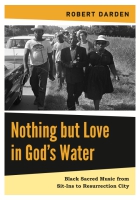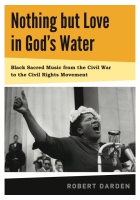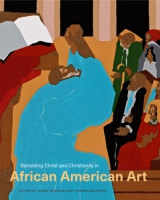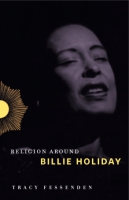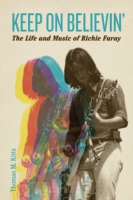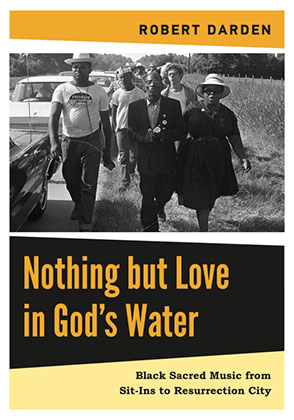
Nothing but Love in God’s Water
Volume 2: Black Sacred Music from Sit-Ins to Resurrection City
Robert Darden
Nothing but Love in God’s Water
Volume 2: Black Sacred Music from Sit-Ins to Resurrection City
Robert Darden
A 2017 Choice Outstanding Academic Title
“Darden’s finest book on black sacred music to date. . . . Noting how spirituals are still sung to embolden freedom fighters around the world, Darden reminds us that protest music remains a balm as well as a call to action against political oppression.”
- Media
- Description
- Reviews
- Bio
- Table of Contents
- Sample Chapters
- Subjects
Watch a discussion with Robert Darden about Nothing But Love in God’s Water on CSPAN’s BookTV here.
To view the source materials from the book and learn more about the project, go to the Fulcrum website.
Robert Darden, former gospel music editor for Billboard magazine and the founder of the Black Gospel Music Restoration Project at Baylor University, brings this vivid, vital story to life. He explains why black sacred music helped foster community within the civil rights movement and attract new adherents; shows how Martin Luther King Jr. and other leaders used music to underscore and support their message; and reveals how the songs themselves traveled and changed as the fight for freedom for African Americans continued. Darden makes an unassailable case for the importance of black sacred music not only to the civil rights era but also to present-day struggles in and beyond the United States.
Taking us from the Deep South to Chicago and on to the nation’s capital, Darden’s grittily detailed, lively telling is peppered throughout with the words of those who were there, famous and forgotten alike: activists such as Rep. John Lewis, the Reverend Ralph Abernathy, and Willie Bolden, as well as musical virtuosos such as Harry Belafonte, Duke Ellington, and The Mighty Wonders. Expertly assembled from published and unpublished writing, oral histories, and rare recordings, this is the history of the soundtrack that fueled the long march toward freedom and equality for the black community in the United States and that continues to inspire and uplift people all over the world.
“Darden’s finest book on black sacred music to date. . . . Noting how spirituals are still sung to embolden freedom fighters around the world, Darden reminds us that protest music remains a balm as well as a call to action against political oppression.”
“An exhaustive, meticulous history of the role of song in African American liberation movements. . . . Darden’s readable, song-by-song reconstruction of the movement’s history serves as an in-depth history of the movement itself. Summing up: Essential.”
“Nothing but Love in God’s Water, volume 1, fills a significant niche in the already-voluminous library of the civil rights movement. While previous Pulitzer Prize–winning books have definitively covered the movement’s leaders, politics, strategies, philosophy, and impact, the literature related to the influence—actually, the importance—of the music to the movement has barely been addressed in meaningful, systematic fashion. Nothing but Love in God's Water does that and more.”
“Nothing but Love in God’s Water encourages readers to think of music as an invitation to transformation, as an opportunity, through performance, to re-arrange socio-political and economic structures of collective life.”
Robert Darden is Professor of Journalism, Public Relations, and New Media at Baylor University. He is the author of two dozen books, including the first volume of Nothing but Love in God’s Water and People Get Ready: A New History of Black Gospel Music.
Contents
List of Illustrations
Special Thanks
Introduction: What Came Before
Chapter 1: The Sit-Ins
Chapter 2: The Freedom Rides
Chapter 3: Albany, Georgia
First Interlude: McComb, Georgia
Chapter 4: Birmingham, Alabama
Chapter 5: The March on Washington for Jobs and Freedom
Second Interlude: Death in America
Chapter 6: Mississippi Freedom Summer
Chapter 7: Selma, Alabama
Third Interlude: St. Augustine, Florida; The Meredith March; Popular Music
Chapter 8: Chicago, Illinois
Chapter 9: Memphis, Tennessee
Epilogue: Poor People’s March and Resurrection City
Conclusion: What Comes Now
INTRODUCTION
PLAYBOY: We Shall Overcome has become the unofficial song and slogan of the civil rights movement. Do you consider inspirational anthems important to morale?
KING: In a sense, songs are the soul of a movement. Consider, in World War II, Praise the Lord and Pass the Ammunition, and in World War I, Over There and Tipperary, and during the Civil War, Battle Hymn of the Republic and John Brown’s Body. A Negro song anthology would include sorrow songs, shouts for joy, battle hymns, anthems. Since slavery, the Negro has sung through his struggle in America. Steal Away and Go Down, Moses were the songs of faith and inspiration which were sung on the plantations. For the same reasons the slaves sang, Negros today sing freedom songs, for we, too, are in bondage. We sing out our determination that “We shall overcome, black and white together, we shall overcome someday.” – Martin Luther King Jr.
What Came Before
The goal of these two volumes is to show the continued use and impact of the protest spiritual from the era before the American Civil War through Reconstruction, the Great Migration, the civil rights movement of the 1950s and 1960s and beyond. Further, I seek to show both how the protest spirituals and freedom songs were used and why they were vitally important to the movement.
In Volume I, it was my desire to glean as much as possible from the documents and oral histories from a century when the African-American experience was poorly documented, and to establish the unbroken transmission of these songs, usually (but not always) by word of mouth from the unknown “slave poets” onto the lips of freedom marchers in Birmingham and Memphis. I hoped to show that the protest spirituals sustained and nurtured African Americans through times when – to the white population of America, at least – they were virtually invisible, such as during the1930s and ‘40s when blacks were grudgingly included in the labor movement.
But more than just establishing the continuity, my hope with these two volumes is to emphasize the vitality and importance of that music in the African American’s ongoing fight for justice and equality in the United States. To me, the fact that these protest spirituals endured and were preserved in an almost apostolic succession from the Civil War to the civil rights movement strongly suggests that they were more than just marching songs. Because of their direct connection to the African-American church and because of the black church’s leadership during the civil rights movement, these songs bore the weight of a mandate from God. The protest spirituals affirmed and reinforced the profound statement that the God who delivered Moses from Egypt and the American slaves from bondage in the South was the same God who would free African Americans in modern-day Dixie. For those who truly believed, this movement was more than a simple political movement, it was a religious crusade, one that could have only one outcome.
In their autobiographies and biographies, virtually all of the participants of the civil rights movement cite the importance of the freedom songs, martial hymns, protest spirituals, gospel songs and occasional revised R&B song to the success of the movement. And, with individuals like Bayard Rustin – a singer who performed with African American artists who knew former slaves and who later became both a union activist and confidante of Dr. Martin Luther King Jr. – it is a relatively straight line from the Civil War to the civil rights movement. But to quantify the power and importance of that music, of those words, of that heritage, is the more difficult task for the scholar. That the participants agree, no matter how strongly, that the songs were important, even crucial, to the civil rights movement may not be enough. Men and women, young and old, faced death with these songs on their lips, believing the divine power behind these words. Some died while singing these songs, whether on a protest march in St. Augustine, in a crowded jail cell in Parchman, or on a lonely Mississippi back road as a hooded hangman prepared a noose. That makes them different by a very real degree than a marching song sung in cadence to make a long trek bearable.
Modern scholarship has shown that the spirituals of the 19th Century were not just about longing for physical freedom in the world to come, but were direct challenges to the slave-owning states, albeit challenges usually couched in a hidden language that the overseers did not understand. The protest spirituals of the 20th century took that challenge directly to their oppressors in an “explicit message of collective resistance.” No more would the identity of the enemy be hidden behind the masks of “Pharaoh” or “Satan.” Beginning in Albany, Ga., specific obstacles (such as Sheriff Laurie Pritchard) would be named – and challenged. In short, as Bernice Johnson Reagon, who began her long career of activism in Albany, would say of the combination of spiritual and protest song, the overt message of the songs became, “where I am is not where I’m staying.” And lest we think that this process begins in the middle of the 20th Century, the influential protest spiritual “Oh, Freedom” (“And before I’ll be a slave/I’ll be buried in my grave”) is recorded as having been sung in the Atlanta riots of 1906. Likewise, a number of gospel songs – the heir to the spiritual – in the 1940s and ‘50s have been cited as commentaries against the existing order: “Oh Yes, He Set Me Free” (1951), “Jesus is a Friend Until the End’ (1952), “I Had a Talk With Jesus (1954), “Soldiers in the Army” (1956), and “When the Lord Gets Ready” (1960), among others.
Volume I ends with the use and importance of protest spirituals in the successful resolution of the Montgomery bus boycott in late 1956. The newspaper accounts, diaries, and biographies emphatically record the widespread use of carefully chosen hymns, protest spirituals, and other forms of African-American sacred music, particularly in the regular church services that sustained the walkers and their supporters.
The presence and support of black churches intensified and, in the parlance of some participants, “sanctified” the power of the songs. Subsequent scholarship has shown that the “church’s culture content played a crucial role in transforming individual discontent into collective interests and action.” Political activists were usually church activists as well. The deep and well-disciplined organization of the African-American church had a “direct and independent role in facilitating collective action.”
One question that arises from that assertion is whether or not the “cultural symbols” of the Black church – “gospel music, spirituals, prayer and social justice sermons” – are part of the process that births and promotes community action. The belief that those “symbols” did (and do) engender activism was shared by every interviewee in this book. Belief is a difficult concept to prove or disprove from an academic standpoint. But the studies that have undertaken to prove (or, again, disprove) that hypothesis have indicated their agreement, including convincing work by Sandra L. Barnes, who found a “clear linkages between gospel music as a cultural symbol and community action regardless of church and pastoral dynamics.”
J.W. Alexander of the Soul Stirrers recalled that during the group’s March 1956 tour, the group would request prayers for Autherine Lucy, the first African American to attempt to integrate the University of Alabama, and for the bus boycott in Montgomery. The requests “electrified” their audiences. Said Joseph Williams Jr. of the Dixie Hummingbirds, “I believe gospel music, Negro spirituals, and gospel songs [were] the fuel that made the buses run, the trains run, kept the airplanes in the air, and kept us walking on foot when we were so tired with the Montgomery boycott situation … The people would sing.” Robert Shelton, a music writer for The New York Times who covered the Albany Movement protests of 1961-2, interviewed a number of participants at the time. He reported that the “current phase of protest in song gained impetus” during the Montgomery bus boycotts, “gained momentum” during the sit-in demonstrations of 1960, and eventually spread to Nashville and beyond the following year. It was also in Montgomery that singing became an essential part of the services during the regular mass meetings that were first held in sympathetic African-American churches. As T.V. Reed and others have noted, the singing of protest spirituals, carefully chosen hymns, and (later) freedom songs helped prevent angry and hurt participants from becoming a mob, “conveyed messages of quiet defiance,” and clarified values. The singing was both a “rehearsal for collective activity and a direct part of the action.” Singing is a nonviolent activity and the songs consistently and emphatically reinforced the “core value” of the movement – “nonviolence.” In time, the songs sung at mass meetings would be used for tactical purposes as well.
Part of the lack of visibility of religious-based protest music in the early years of the civil rights movement may derive from the scarcity of direct mentions of this music in the white media’s coverage of King, the most visible, the most widely covered of the movement’s leaders by the media. But King, who was steeped in the lore and music of the African-American church, peppered his sermons and speeches with lines from spirituals, gospel songs, and hymns. The white reporters of the day were rarely versed in the literature and music of the black church. Even if they caught the references, the reporters rarely remarked on those inclusions. “We do not understand the persuasiveness of Martin Luther King, Jr., our most important twentieth-century rhetor,” writes Keith D. Miller in an article on King’s epistemology, “because we do not understand his relationship to the black folk pulpit.” For instance, in his widely reported “Drum Major Instinct” sermon, King incorporates lyrics from “Never Alone,” “If I Can Help Somebody” and at least two other gospel songs. If his white audiences could not recognize the words and their origins and context, his black, mostly church-going audiences most certainly would.
The presence of those undertones, of those coded messages, has meant that people, black and white, who were not part of the movement may underestimate the power of the protest spirituals. It has also meant that observers have misunderstood the urgency implied in the lyric “We shall overcome someday.” A word like “shall” sounds, to the untrained ear, passive and gentle. But there is an impetus to “shall,” particularly when it is sung at a sit-in, on a freedom ride, during a mass meeting, or on a protest march, that propels listeners to action.
King often ended mass meetings with a call-and-response dialogue, “What do you want?” “Freedom!” the crowd would roar back. “When do you want it?” “Now!” would come the response. King would then lead the audience out of the church singing a protest spiritual, such as “Ain’t Gonna Let Nobody Turn Me Around.” Conversely, “We Shall Overcome” would often be used to close meetings that did not require immediate action of the listeners. Instead, it was often employed as a reminder for listeners to continue to actively strive, to steadfastly endure, and – if necessary – to sacrifice again and again.
King was well aware of the continuity of the spirituals. In one published sermon, he talked movingly of the worst times of slaves, of the beatings, of the auction blocks, of families torn asunder. And, in those times – just as in the middle of the 20th Century – the advice was, “Go on somewhere and just start singing.” During the slaves’ darkest hour, King said, they sang “Nobody knows de trouble I’ve seen” and, just a little while later, they were able to sing, “I’m so glad trouble don’t last always.” As discussed in Volume I, different spirituals and gospel songs came to be used for specific circumstances and thus, by repetition, their power reinforced. Still today, “Take My Hand, Precious Lord,” is heard at virtually every African-American funeral in the United States. Its majesty and solace has been handed down from generation to generation since its inception.
Reagon is one of those rare academics who lived, participated and influenced the era she writes about as an historian and musicologist. While she is one of the great proponents of the power of protest spirituals and freedom songs, she reminds us that it was more than just the singing alone that transformed and galvanized the movement. It is imperative to remember, she states, that the singing had to be conducted within a sphere of community. “If you cannot sing a congregational song at full power, you cannot fight in any struggle,” she writes. “It is something you learn.” It takes commitment, passion, and courage:
In congregational singing you don’t sing a song – you raise it. By offering the first line, the song leader just offers the possibility, and it is up to you, individually, whether you pick it up or not … It is a big personal risk because you will put everything into the song. It is like stepping off into space. A mini-revolution takes place inside you. Your body gets flushed, you tremble, you’re tempted to turn off the circuits. But that’s when you have to turn up the burner and commit yourself to follow that song wherever it leads. This transformation in yourself that you create is exactly what happens when you join a movement. You are taking a risk – you are committing yourself and there is no turning back.
According to activist Willie Bolton, those in attendance at mass meetings were often “just so high from freedom singing, they didn’t need any preaching, they were ready to go, and we just marched them right out the church.”
After Montgomery
Though the actions of the movement in the years immediately following the bus boycott are not as well-known (or as well-chronicled) as Montgomery, a host of civil rights-related activities took place across the United States – all of which continued to churn segregation’s waters. As Morris and others have noted, it was during this period that the movement experienced the actions of a new “cadre of social change-oriented ministers and their congregations” and the emergence of the weekly mass meetings where strategies were hashed out and crucial information (including nonviolence) were disseminated, as well as the “adaptation of a rich church culture to political purposes” where “spirituals, sermons and prayers were used to deepen the participant’s commitment to the struggle.” In short, the period provided “pivotal resources for the emerging civil rights movement.” For the purposes of this study, of course, it is an examination of the impact of those spirituals (and the other forms of black sacred music) that is the focus.
When popular accounts of the movement in recent years mention the music, it is usually in the context of the Albany, Ga. boycotts and jailings, which began in late 1961. Some books skim over the post-Montgomery years altogether, touching only briefly on the restaurant sit-ins freedom rides. However, the protest spirituals endured and flourished during this era as African Americans continued their systematic efforts to secure their civil rights.
Despite the Supreme Court’s decision in late 1956 against segregation and other practices on Montgomery’s public buses, various appeals delayed implementation, forcing the Montgomery Improvement Association to continue raising money. Ruth Bunche and Aminda Wilkins co-chaired a fund-raiser, titled the Montgomery Anniversary Concert, on December 5, 1956, in New York’s Manhattan Center. The concert, which featured Coretta King, Harry Belafonte, Duke Ellington and others, raised money for the drivers, to defray gasoline cost and for the continuously mounting legal expenses. Coretta King sang both classical selections and spirituals at the concert, including “Honor, Honor,” said to be her husband’s favorite.
The eventual success of the Montgomery bus boycott spawned similar boycotts in Tallahassee, Atlanta, Miami, Mobile, New Orleans, Birmingham, and other cities, even as NAACP-sponsored legal cases slowly wound their way through the state and federal courts. On January 9, 1957, King joined a number of pastors, including the Rev. Ralph Abernathy, in Atlanta to found what would be eventually named the Southern Christian Leadership Conference (SCLC). King’s connection with organized labor, through E.D. Nixon in Montgomery, A. Philip Randolph, Bayard Rustin, and others, meant that much of the SCLC’s original budget would be provided by the integrated United Packinghouse Workers of America, just as Randolph’s Brotherhood of Sleeping Car Porters had supported the MIA’s efforts in Montgomery.
While in Atlanta, King and Abernathy received late-night calls from Montgomery, where Ralph Abernathy’s home and several churches had been bombed. Violence, in fact, escalated in the South after the Brown v. Board of Education decision and the boycott’s success in Montgomery. One study reported 530 known cases of violence, reprisal and intimidation in the aftermath of the boycott and Brown decision between 1955 and 1958. Following a trip to Ghana for that country’s independence ceremonies, the Kings made a brief European tour, eventually returning to New York where, along with Randolph and Wilkins, he joined in the planning of a proposed May 17 prayer pilgrimage in Washington D.C.
One of the earliest recorded uses of a protest spiritual in King’s sermons would become one of his most enduring. At a Freedom Rally on April 10 in St. Louis, Mo., King closed his address with a final line that Clayborne Carson writes was “likely borrowed” from a fellow pastor:
From every mountain side, let freedom ring. Yes, let us go out and be determined that freedom will ring from every mole hill in Mississippi. Let it ring from Stone Mountain of Georgia. Let it ring from Lookout Mountain of Tennessee. Let it ring from every mountain and hill of Alabama. From every mountain side, let freedom ring. And when that happens we will be able to go out and sing a new song: “Free at last, free at last, great God almighty I’m free at last.”
After months of planning, and long, tough negotiations with the Eisenhower administration, King participated in the May 17 “Prayer Pilgrimage for Freedom” demonstration at the Lincoln Memorial. Though organizers, including musician-turned-strategist Rustin, NAACP executive secretary Roy Wilkins, and union legend Randolph, had hoped for more than 50,000 people, about 25,000 showed up (though figures vary) – including a large contingent from Montgomery. The pilgrimage was arranged, in part, to prompt the Eisenhower administration to begin forcefully implementing the now three-year-old Brown decision. For three hours, the peaceful assemblage drew national media attention, though much of it concerned King’s closing “Give us the ballot speech.” Also speaking were Wilkins, Rep. Adam Clayton Powell, the Rev. Fred Shuttlesworth, Sammy Davis, Jr., Ruby Dee, Sidney Poitier, and Belafonte. The one musical soloist, Mahalia Jackson, sang the patriotic hymn “My Country Tis of Thee,” which Marian Anderson had “politicized” here years earlier, and the emotional protest spiritual “I’ve Been ‘Buked and I’ve Been Scorned.”
By Spring 1957, following resolution of the bus boycott and the Prayer Pilgrimage, King had become the undisputed face of the civil rights movement in the United States, meriting feature-length (and sympathetic) profiles in Time magazine, The New York Times, and an appearance on “Meet the Press.” While there were many efforts by African Americans across the United States to integrate the schools that year, the eyes of the nation turned to Little Rock, Arkansas, from September through November with the attempt by nine students to integrate the local high school, the defiance of Arkansas Gov. Orval Faubus, and Eisenhower’s subsequent decision to send the National Guard to protect the young students. In the aftermath of Little Rock, the administration oversaw passage of the virtually toothless Civil Rights Act of 1957.
Throughout this period, the Highlander Folk School in East Tennessee continued operation, teaching leadership courses on integration, voting rights, and nonviolence, as well as the use of music as an educational and organizing tool. The school survived despite ferocious opposition from conservative Tennessee authorities. One early attendee had been Rosa Parks, and it was at Highlander that Myles Horton’s wife Zilphia had learned of the transformation by striking North Carolina tobacco workers of the old gospel song “I’ll Overcome Someday” into “We Will Overcome” and, along with Pete Seeger, had changed it to “We Shall Overcome.” Seeger, Horton, and young activist Guy Carawan taught an early version on the song at the near-weekly Highlander workshops to civil rights activists from across the South. Among the early participants was a young John Lewis, who witnessed a performance of “We Shall Overcome” by Seeger and a passionate closing message by Myles Horton, then returned to Nashville “on fire” for justice. Carawan, like Seeger and the Hortons, had learned from the labor movement that “group singing could be a strong unifying force in struggle,” especially the more familiar songs. Since many of the African Americans came from predominantly religious backgrounds, those “familiar songs” were the protest spirituals. At one such workshop, activist C.T. Vivian recalled that Carawan would offer a detailed background on a spiritual, then teach it to attendees: “And little by little, spiritual after spiritual began to appear – with new sets of words, new changes, ‘Keep Your Eyes on the Prize, Hold On’ or ‘I’m Gonna Sit at the Welcome Table.’ Once we had seen it done, we could begin to do it.”
One of the first times King is recorded as hearing the new rendition of “We Shall Overcome” occurred during a workshop honoring Highlander’s twenty-fifth anniversary, Labor Day 1957. Afterwards, King kept humming the song’s melody. On the way home, he told Abernathy and activist Anne Braden, “There’s something about that song that haunts you.”
In July 1959, Carawan, now musical director of Highlander, sent a letter to each of the communities where Highlander had helped establish citizenship schools, offering his services as a song leader. The letter also outlined the organization’s intention to publish a book of integration-related songs, to hold song leader workshops, to release vinyl recordings of anti-segregation songs, and to sponsor integrated music festivals. All of these ambitious goals became a reality within five years.
Long antagonistic to the integrated setting, Tennessee state troopers and sheriff’s deputies finally raided the Highlander campus, including several private homes, during a desegregation workshop on July 31, 1959, arresting a number of people, including Carawan. As authorities rampaged through the buildings, ostensibly looking for illegal alcohol, one participant was arrested for merely strumming the chords to “We Shall Overcome.” Blockaded into one darkened room while the search continued, educator and activist Septima Clark suggested that the staff sing, which they did. Moments later, a policeman barked at those present, “All right, you can sing. But don’t sing so loud!” The group sang “We Shall Overcome” and other hymns until the nightmarish evening ended. State pressure eventually forced the closing the Monteagle campus, though the school reopened with a slightly different name in Knoxville in 1961 and continued its workshops.
Elsewhere, Mahalia Jackson’s visibility among both white and black audiences continued to soar. On Sunday, July 7, 1957, she became the first gospel artist to perform at the Newport Jazz Festival, accompanied by a choir that included Clara Ward and Marion Williams. The performance was broadcast over both the Voice of America and NBC Radio. At one point, while Jackson was singing, jazz legend Mary Lou Williams told promoter Joe Bostic, “That goddam woman makes cold chills run up and down my spine.” Press and magazine reviews were “rapturous.” The following year at Newport, Jackson sang “Keep Your Hand on the Plow” and was accompanied by Ellington’s band for a suite he had composed especially for her, “Come Sunday Morning.” Director Bert Stern’s documentary, Jazz on a Summer’s Day (released in 1960), chronicles the 1958 festival and spotlights Jackson as the artist “identified as the star of the festival.” Stern closed his well-received film with Jackson and Ellington’s performance. While she was always identified with the Democratic Party, Jackson sang four selections at a surprise 68th birthday party for Eisenhower in October 1959.
As for King himself during the fall of 1958, he would be arrested, freed, see the publication of his book Stride Toward Freedom, and stabbed by a mentally disturbed woman in New York. In February and March of 1959, King fulfilled a longtime dream to visit India and various sites and people related to Mahatma Gandhi. Joined by Coretta and author Lawrence Reddick, King toured the country making pilgrimages, meeting prominent Indian politicians and religious figures, and speaking widely, usually accompanied by Coretta, who sang spirituals (which he writes Indian audiences “loved”). The music critic for the influential Times of India praised the “grace and beauty of expression” of Coretta’s spirituals, writing that her performance of “Nobody Knows the Trouble I’ve Seen” featured “sweet and plaintive strains” as she “invested her songs with a rare glow and intensity of feeling.”
The year 1960, building on the slow but important work of previous years, saw a marked rise in anti-segregation actions across the United States. In retrospect, we know that some of the protest spirituals and freedom songs honed in the mass meetings of Albany, Selma and Birmingham would eventually transcend the African- American community. Within a few years, they would become part of the national dialogue, used by presidents and protestors alike. Appalachian miners at the Pittston Coal Company sang “We Shall Overcome” on protest lines in 1989. Chinese pro-democracy demonstrators that same year wrote “We Shall Overcome” on their headbands and t-shirts. During the breakup of the Soviet Union and dissolution of Yugoslavia, televised clips of the events showed workers singing “We Shall Overcome.” And the song was sung by pro-democracy protestors in Egypt during the Arab Spring of 2010-11, where comic books featuring King’s words and beliefs were widely circulated in Egypt and throughout the Middle East.
But it is how those songs, those words, traveled from Montgomery out into the world with their power and universal message intact is the journey that I have attempted to chronicle in Volume 2.
“When you get together at a mass meeting, you sing the songs which symbolize
transformation,” adds Reagon, “which make that revolution of courage inside you. You raise a freedom song.”
In 1960, the freedom song is raised in such a way that forever changes America – and the world.
Mailing List
Subscribe to our mailing list and be notified about new titles, journals and catalogs.
